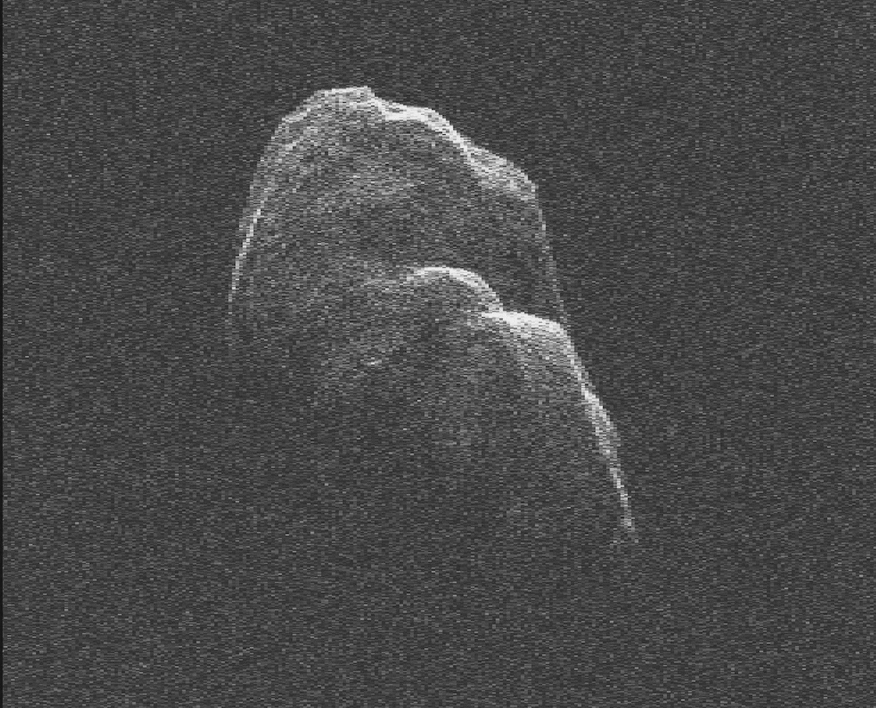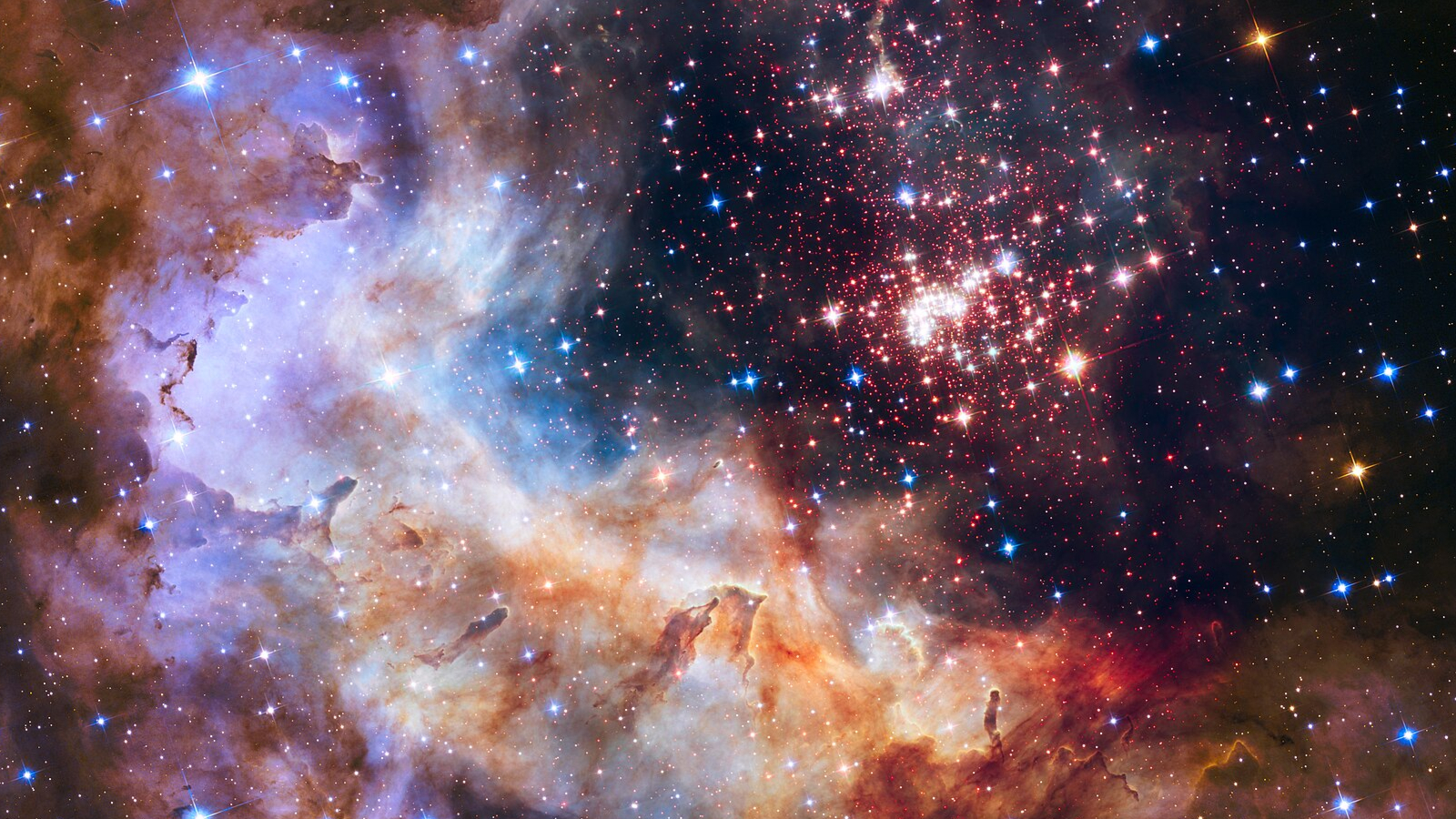Huge Asteroid's Earth Flyby Caught on Video

A new video captures the giant asteroid 4179 Toutatis tumbling through space on its flyby of Earth earlier this week.
The asteroid Toutatis video, which is about 40 seconds long, combines 64 radar images taken Wednesday and Thursday (Dec. 12 and 13) by NASA's Deep Space Network antenna in Goldstone, Calif. On those days, Toutatis was about 4.3 million miles (7 million kilometers) from Earth, or about 18 times farther away than the moon is.
The new radar images — which have a resolution of 12 feet (3.75 meters) per pixel — show the 3-mile-wide (5 kilometers) asteroid in striking detail. Toutatis is revealed to be an elongated, irregularly shaped object with multiple ridges, researchers said. Strange bright glints may indicate surface boulders, they added.
The video also sheds light on how Toutatis moves. The asteroid spins about its long axis every 5.4 days and wobbles through space like a badly thrown football, scientists said.
Toutatis never posed a threat to Earth on its recent flyby, and researchers say there is no chance it will hit our planet over the next four centuries or so. (Beyond that time, the asteroid's orbit cannot be accurately computed.)
Nevertheless, the Minor Planet Center in Cambridge, Mass., lists Toutatis as a potentially hazardous object, meaning that it could pose a risk to Earth at some point in the future.
Toutatis would cause catastrophic damage if it ever did slam into Earth, potentially extinguishing humanity and many other species. In general, scientists think a strike by anything at least 0.6 miles (1 km) wide could have global consequences, most likely by altering the world's climate for many years to come.
Breaking space news, the latest updates on rocket launches, skywatching events and more!
For comparison, the asteroid thought to have wiped out the dinosaurs 65 million years ago was an estimated 6 miles (10 km) across.
Asteroid Toutatis makes one trip around the sun every four years. Its next close encounter with Earth will come in November 2069, when the space rock will fly safely by at about 1.8 million miles (3 million km), or 7.7 Earth-moon distances.
Follow SPACE.com on Twitter @Spacedotcom. We're also on Facebook & Google+.
Join our Space Forums to keep talking space on the latest missions, night sky and more! And if you have a news tip, correction or comment, let us know at: community@space.com.

Space.com is the premier source of space exploration, innovation and astronomy news, chronicling (and celebrating) humanity's ongoing expansion across the final frontier. Originally founded in 1999, Space.com is, and always has been, the passion of writers and editors who are space fans and also trained journalists. Our current news team consists of Editor-in-Chief Tariq Malik; Editor Hanneke Weitering, Senior Space Writer Mike Wall; Senior Writer Meghan Bartels; Senior Writer Chelsea Gohd, Senior Writer Tereza Pultarova and Staff Writer Alexander Cox, focusing on e-commerce. Senior Producer Steve Spaleta oversees our space videos, with Diana Whitcroft as our Social Media Editor.
